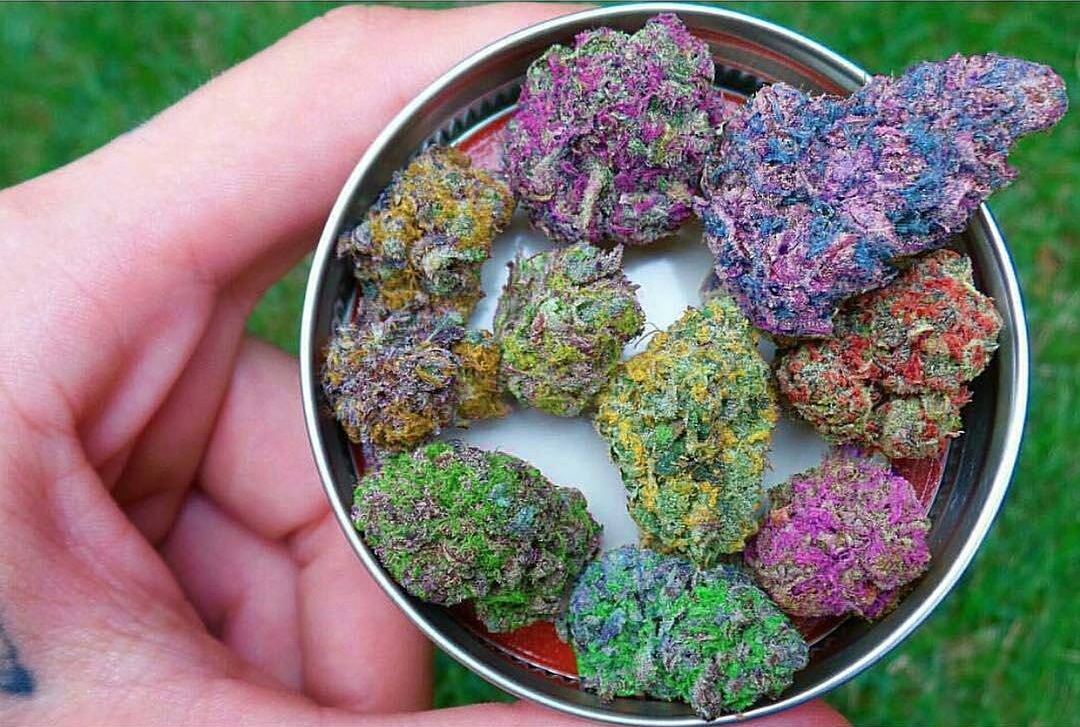In the ever-evolving world of cannabis, a quiet revolution is taking root—one that’s as green as the plants themselves. As we hit October 2025, the industry is pivoting toward sustainability, driven by consumer demand, regulatory pressures, and the stark reality of climate change. Gone are the days when cannabis farming was synonymous with energy-guzzling indoor operations and chemical-laden soils. Today, eco-friendly practices are not just buzzwords; they’re essential for survival in a market projected to grow at a compound annual rate of 16.26% through 2033. With nearly 70% of cannabis suppliers now boasting sustainable or organic credentials, the sector is blooming into an exemplar of environmental stewardship. This shift is particularly pronounced in the cultivation of high-THC strains, where potency meets planet-friendly methods, creating a harmonious blend of buzz and benevolence.
Why Sustainability Matters in Weed Farming
The environmental toll of traditional cannabis cultivation is staggering, making the push for sustainability a no-brainer. Indoor growing, a staple for controlled environments, devours energy like a black hole—emitting up to 5.5 tons of CO2 equivalent per kilogram of dried flower. That’s more carbon-intensive than some industrial processes! Water usage is another culprit; both indoor and outdoor operations can guzzle thousands of gallons per plant, exacerbating droughts in arid regions like California. Yet, the silver lining? Switching to outdoor or hybrid models can slash emissions by up to 96%, proving that going green isn’t just ethical—it’s efficient. For high-THC strains, which dominate the market with consumers prioritizing effects over all else, sustainable farming ensures that the pursuit of potent euphoria doesn’t come at the planet’s expense. Brands are responding: by 2025, showcasing organic methods and energy-efficient ops has become a marketing must, appealing to eco-conscious millennials and Gen Z tokers who make up over 60% of the buyer base.
Cutting-Edge Eco-Friendly Techniques
Innovation is the lifeblood of sustainable cannabis farming, with techniques that minimize waste while maximizing yield. Water conservation tops the list—drip irrigation and rainwater recycling systems can cut usage by 50-70%, vital in water-scarce areas. Energy efficiency follows suit: LED lighting, which uses 40% less power than traditional HID bulbs, is now standard in indoor setups, paired with solar panels to harness renewable energy. Organic soil management is another game-changer; compost teas, worm castings, and cover crops enrich the earth naturally, ditching synthetic fertilizers that pollute waterways. Hydroponics, a soil-less method, is surging in popularity for its precision—recirculating nutrient solutions reduces water needs by up to 90% and allows for year-round cultivation without pesticides. These practices aren’t fringe; they’re mainstream, with states like Colorado mandating energy audits for cultivators, leading to a 20% drop in industry-wide emissions since 2020.
Breeding and Growing High-THC Strains Sustainably
High-THC strains, those powerhouses clocking in at 20-30% THC, are the stars of the show, but breeding them sustainably requires finesse. Genetic engineering and marker-assisted selection help create resilient varieties that thrive in eco-friendly setups, resisting pests without chemicals. Take regenerative agriculture: farmers rotate crops, integrate livestock for natural fertilization, and build soil health, yielding robust plants like Gorilla Glue or Blue Dream with minimal inputs. In extreme climates, innovative techniques shine—desert growers use shade nets and mulching to conserve moisture, while Arctic ops employ geothermal heating for low-carbon warmth. Data backs the benefits: sustainable high-THC farms report 15-25% higher yields per acre compared to conventional ones, thanks to healthier ecosystems that boost cannabinoid production. Companies like Seed of Life Labs are pioneering this, blending hydroponics with organic nutrients to produce potent strains that are as kind to the earth as they are to the mind.
Overcoming Environmental Hurdles
No path to sustainability is without potholes, and cannabis farming faces its share. Soil degradation from monocropping plagues outdoor grows, while indoor air pollution from volatile organic compounds adds to the mix. Small farmers, who produce 40% of global cannabis, struggle with high upfront costs for green tech—solar setups can run $50,000 per acre. Solutions? Policy incentives like tax breaks for eco-certifications are emerging, with 15 states offering rebates by 2025. Community cooperatives pool resources for shared hydro systems, cutting costs by 30%. Pest management goes natural with beneficial insects and neem oil, reducing chemical runoff by 80%. For high-THC strains sensitive to environmental stress, adaptive breeding counters climate variability, ensuring consistent potency even in fluctuating conditions.
The Future Harvest: Trends Shaping 2025 and Beyond
Peering into 2025, the cannabis landscape is lush with promise. Craft labels emphasizing living soil and recycled rainwater are exploding, with small-batch high-THC offerings fetching premium prices—up 25% over mass-produced buds. Tech integration, like AI-monitored grows optimizing CO2 levels, could trim energy use by another 20%. Packaging goes green too: biodegradable materials and minimalist designs reduce waste, aligning with consumer preferences where 80% favor sustainable brands. Global expansion, especially in Europe and Asia, will amplify these trends, with hydroponic exports from sustainable farms rising 35%. High-THC innovations, including terpene-rich hybrids, will lead, but only if tied to eco-practices—predicting a market where “green” certification becomes as coveted as organic labels.
Harvesting a Sustainable Legacy
As the sun sets on outdated farming, sustainable cultivation of THC strains heralds a brighter, greener era for cannabis. By embracing water-smart, energy-efficient, and soil-nurturing methods, the industry isn’t just growing weed—it’s growing a legacy of responsibility. With facts showing massive reductions in emissions and resource use, plus figures forecasting explosive growth, the message is clear: potency and planet can coexist. Whether you’re a grower, consumer, or advocate, joining this green wave ensures that every puff supports a healthier earth. In 2025, the highest high comes from knowing your cannabis is cultivated with care—for you and the world.
In a world where sustainability meets potency, NanoHempTechLabs leads the charge in wholesale high-THC strains cultivated through innovative, planet-friendly methods. Our regenerative farming slashes CO2 emissions by up to 96%, conserves water with advanced drip systems, and boosts yields by 15-25% using organic, hydroponic techniques. From resilient varieties like Gorilla Glue to terpene-rich hybrids, our products deliver premium quality without compromising the environment.
Join the green revolution—elevate your inventory with sustainable excellence. Schedule a call today to explore wholesale opportunities and customize your order!
Reference:
1. (2021). Agricultural sustainability in punjab: issues and challenges. Indian Journal of Economics and Development, 136-142. https://doi.org/10.35716/ijed/20020
2. (2021). Unveiling the botanical versatility of cannabis sativa: a modern perspective on medicinal and industrial applications. PSR, 2(1), 1-6. https://doi.org/10.51470/psr.2021.02.01.01 3. Abdelhamid, M., Baraka, S., Ali, K., Zhang, Z., & Hendy, Z. (2025). Energy and life cycle assessment of potato production under groundwater and surface water irrigation systems in egypt: a pathway to sustainable agriculture. Potato Research, 68(3), 3447-3473. https://doi.org/10.1007/s11540-025-09885-7





